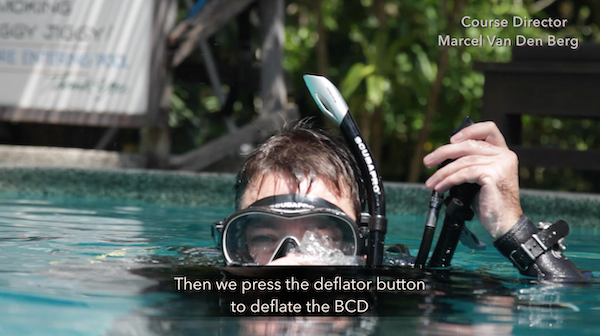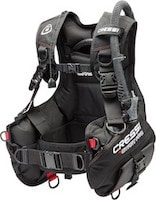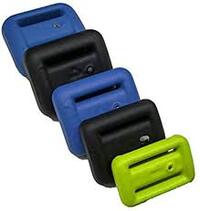PADI Buoyancy Check Scuba at the Surface
How to check your buoyancy and weight distribution at the surface for the PADI Open Water Diver Course is easy. Doing a good buoyancy check scuba is important to make sure that you enjoy your dive better. Having great buoyancy helps to stay of the bottom, not damage aquatic life, is better for your air consumption and so much more.
Buoyancy control has a lot to do with having the right weight distribution. By performing this padi buoyancy check you can easily find out if you have this right buoyancy and weights.
PADI Buoyancy Check steps
1. Make sure your have your scuba mask on your face
2. Put your regulator in your mouth
3. At the surface deflate your BCD fully, while holding a full breath (holding your breath at the surface is ok, make sure you NEVER do this underwater)
4. While holding a full breath, with a deflated BCD, you should float at eye level
Check out the Buoyancy check scuba video here:
2. Put your regulator in your mouth
3. At the surface deflate your BCD fully, while holding a full breath (holding your breath at the surface is ok, make sure you NEVER do this underwater)
4. While holding a full breath, with a deflated BCD, you should float at eye level
Check out the Buoyancy check scuba video here:
It is important to do a buoyancy check before every dive. Just remember that you have a full scuba cylinder that is more heavier before the dive than after the dive. It also depends if you are diving on a steel tank or Aluminum tank. Some people prefer to do a second buoyancy check after the scuba dive as they say it is better on an almost empty cylinder. Try different styles yourself to see what is best.
You will practice the PADI Buoyancy Check during confined water dive 1 of the PADI Open Water Diver Course. This is the Performance Requirement of the PADI Instructor Manual:
Adjust for proper weighting – float at eye level at the surface with no or minimal air in the BCD and while holding a normal breath.
Learn more on how to become a PADI Dive Instructor
Good buoyancy control is all about owning the right BCD and having the right amount of weights. Check out this Scuba BCD and weights that we recommend you to invest in improve your buoyancy:
You will practice the PADI Buoyancy Check during confined water dive 1 of the PADI Open Water Diver Course. This is the Performance Requirement of the PADI Instructor Manual:
Adjust for proper weighting – float at eye level at the surface with no or minimal air in the BCD and while holding a normal breath.
Learn more on how to become a PADI Dive Instructor
Good buoyancy control is all about owning the right BCD and having the right amount of weights. Check out this Scuba BCD and weights that we recommend you to invest in improve your buoyancy:
Next Skill: Orally Inflate BCD at The Surface
|
|
|
|
Marcel van den Berg
PADI Platinum Course Director
PADI Platinum Course Director
SCUBA DIVING TIPS
Privacy Policy
Disclaimer
As an Amazon Associate I earn from qualifying purchases.
All content on this website and URL are owned by Sairee Cottage Diving PADI 5-Star IDC Center S-36452
Copyright 2017 - 2022 | All Rights Reserved
Disclaimer
As an Amazon Associate I earn from qualifying purchases.
All content on this website and URL are owned by Sairee Cottage Diving PADI 5-Star IDC Center S-36452
Copyright 2017 - 2022 | All Rights Reserved





